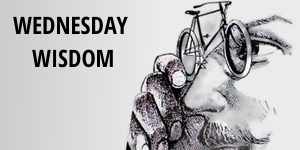Wednesday Wisdom - Cycling Shoes

Cycling Shoes
By Michael Raynor,
Service Department Manager and Buyer
Shopping for cycling or triathlon shoes can be overwhelming. Laces, straps, buckles, boa dials, stiffness index, nylon soles, carbon soles, triathlon shoes vs road shoes…it’s all enough to make your head spin. Let’s start from the top of the shoe and work our way down to discuss some of the finer points of cycling and triathlon shoes to help you in picking out your next pair.
The retention system of the shoe can make a big difference in the comfort and performance of a shoe. Something like a lace-up shoe obviously provides an incredible amount of adjustability, however this isn’t a quick system and it doesn’t allow for changes while riding. Velcro straps also allow for quite a bit of adjustability but they concentrate the pressure to one strip and velcro wears out over time and becomes less secure. Something like a ratcheting buckle is quick, but doesn’t allow for fine adjustments since tightening and loosening are segmented clicks. Something like a Boa™ dial makes the shoe quick to put on and take off, allows for a much greater degree of adjustability (as well as on-the-fly adjustments), and allows for more intricate lacing patterns which can help to distribute the pressure of the retention system.
In addition to the retention system, the construction of the shoe is important to consider when selecting a cycling shoe. A triathlon shoe typically has fewer straps or buckles, making it faster to don and doff mid-race. However with fewer straps or buckles, you decrease the security of the shoe, meaning your foot is more likely to move around in the shoe and the shoe is less likely to be comfortable. With a road shoe, you have a more secure, supportive fit which can allow for more comfort and better power transfer. As a result of additional straps, buckles, or Boa dials, the shoe can be a little slower to don or doff in a triathlon racing scenario. However, most Boa dials have the ability to quickly disengage allowing the upper of the shoe to be pulled loose and the foot removed from the shoe rather quickly. With the adoption of Boa dials in many mid- and high-end road cycling shoes, we’re seeing more and more long-distance triathletes (half-ironman and ironman distance) turning to road shoes for their training and racing needs, and fewer people opting for tri shoes unless they’re racing shorter course races (like Olympic distance triathlons and shorter) where a couple of seconds’ difference in removing shoes can make a big difference.
Moving into the sole of the shoe, there are material and construction differences to consider. In entry level shoes, you’ll typically find a reinforced nylon or composite sole. These are cheaper to manufacture and are typically less stiff than the carbon sole found on middle and top-tier shoes (however they’re still FAR stiffer than the sole of your running or casual shoes). A stiff sole allows for good power transfer meaning that more of the force your putting into the pedals actually makes its way there. On middle and top-tier shoes, you’ll find a carbon fiber sole which provides additional stiffness for better power transfer and comfort. On these middle and top-tier shoes with carbon soles, you’ll often find the stiffness index of a shoe either advertised and/or printed on the sole of the shoe. These are typically an arbitrary index unique to the manufacturer that shows a hierarchy as opposed to a value with units--i.e. A stiffness index of 12 is stiffer than a stiffness index of 9. Because the stiffness index is unique to each manufacturer, this scale can’t really be used to compare the stiffness of two shoes from different manufacturers. For example, a Shimano cycling shoe with a stiffness index of 10 is not the same as a Specialized cycling shoe with a stiffness index of 10, which is not the same as a Scott cycling shoe with a stiffness index of 10.
Just remember that at the end of the day, despite what may look best on paper, the most important thing is that your shoes fit, that they’re comfortable, and that your cleats are properly positioned to prevent hot spots and to allow for good power transfer while engaging the proper muscle groups. We typically recommend determining your budget for a new cycling shoe, then start trying on shoes in that price range to determine what fits best and has the features you want. Looking for new cycling shoes? Come by and talk to our experienced and knowledgeable staff about what shoe will best fit your needs!


